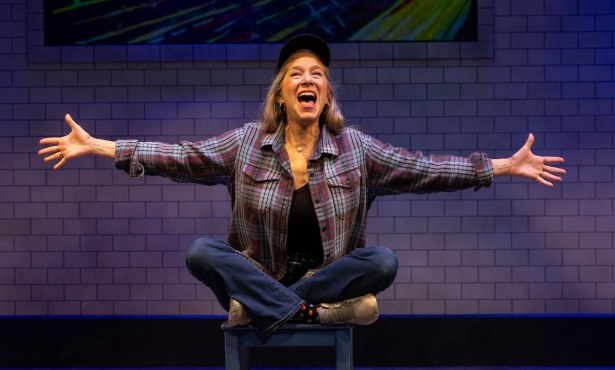Dance Begins Here
How DANCEworks Earned a Place on the National Stage
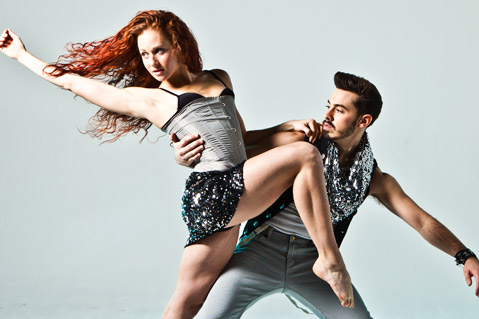
‘There’s great wisdom in uncertainty,” Larry Keigwin observes. It’s mid January, and the New York–based choreographer is speaking from the Honolulu International Airport terminal. Although his comment could be applied to life in general, Keigwin is talking about making dances.
Our interview on the fly is typical for Keigwin, who spends most of the year jetting around the world, touring with his own company, generating new work on commission, and setting existing works on big-name groups, from the Martha Graham Dance Company to the Royal New Zealand Ballet. Come February, he’s looking forward to a change of pace when Keigwin + Company will spend nearly a full month in Santa Barbara. Here, they will spend their days on the stage of the Lobero Theatre, rehearsing existing repertory, creating a dance video with members of the community, and — most significantly — building a brand-new work. He sees this month in Santa Barbara as an oasis of open-ended creativity in an otherwise hectic schedule of production deadlines.
Keigwin is coming to Santa Barbara for DANCEworks, an annual residency designed to give talented choreographers the time and space necessary to create dance. In partnership with the Lobero Theatre Foundation, DANCEworks brings a single dance company to town for one full month each spring. It is the only such program in America that offers dance artists unrestricted use of a theater stage for the creation and performance of new work. For Keigwin, there’s no greater gift than a full month in the theater with his dancers and permission to be uncertain about the outcome of their creative process.
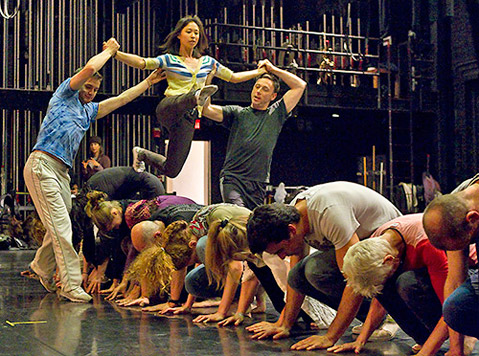
Addressing the Crises of American Dance
If any one nation can claim modern dance as its own, it’s America. Isadora Duncan, Ruth St. Denis, Doris Humphrey, and Santa Barbara’s own Martha Graham were among the pioneering artists who broke from ballet convention to create a new, distinct art form with its own techniques and its own aesthetic standards.
Yet today, America is one of the most difficult countries in which to create dance. Even before the economic downturn of recent years, the National Endowment for the Arts had been scaling back funding and shedding programs designed to support American dance. Artists working in New York City face increasingly cutthroat competition, while those living elsewhere struggle to find support for their pursuit. Public exposure to modern dance remains limited, and although recent television programs like So You Think You Can Dance may be fostering popular interest in the art form, they’re geared toward the more commercialized entertainment end of the spectrum rather than toward what might be termed high art. And yet there remain enough choreographers and dancers, audience members and critics, and promoters and funders who see the importance of contemporary dance to American culture that dance finds ways to survive, if not to flourish.
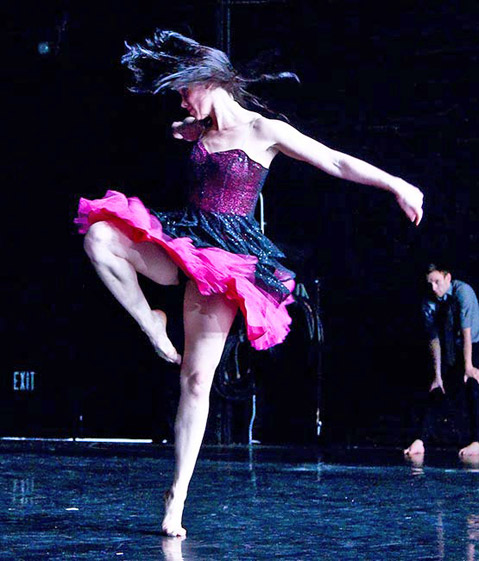
It’s into this rarefied dance ecosystem that DANCEworks director Dianne Vapnek pours her philanthropic resources, her enthusiasm, and her considerable expertise. After more than 15 years of directing dance festivals and immersing herself in the world of contemporary dance, she has come to the conclusion that what choreographers need most urgently is the time and space to generate new work and to do so with as few restrictions as possible. With DANCEworks, Vapnek has focused on providing talented mid-career artists with an oxygen-rich space for creativity, leaving it up to them what kind of work to build. Although a public performance marks the culmination of each DANCEworks residency, there’s an understanding that the work shown will still be in some stage of development; the emphasis is on process rather than on product.
There are a number of residencies available for American dance artists and companies who wish to generate new material — among them the Bates Dance Festival, American Dance Festival, New York Live Arts residencies, and Jacob’s Pillow Dance Festival — but few provide such generous parameters, and none offer a choreographer one month of dedicated rehearsal time on a proscenium stage. The vast majority of dance is created in the studio and only brought to the performance space shortly before the curtain goes up. In such cases, there’s little opportunity to develop the technical aspects of the work or get a feel for the theatrical space. In contrast, DANCEworks gives choreographers access to lights, sound, and an experienced, professional stage crew throughout the monthlong creative process. It’s a model that’s attracting national attention: from choreographers and dancers, funders and promoters, and critics and festival directors. Anyone who’s anyone in American dance knows that something big is happening in Santa Barbara.

Bringing Keigwin Back
Keigwin is in a good position to appreciate the benefits of such an opportunity. This is his second DANCEworks residency and his fifth visit to Santa Barbara as a performer and choreographer. He first came here in the late ’90s as a performer with Dendy Dance Theater. Choreographer Mark Dendy was an early guest of SUMMERDANCE Santa Barbara, the annual festival of contemporary dance directed by Vapnek and Laurie Burnaby that between 1997 and 2006 brought a range of emerging dance companies to town each summer for a full program of community classes, open rehearsals, and performances. SUMMERDANCE suspended operations in ’06, but resurfaced just three years later as DANCEworks.
That first summer Keigwin came to Santa Barbara as a member of Dendy’s company, Vapnek and Burnaby knew they’d discovered something special. “There was a studio showing, and Larry showed a solo he’d been working on set to Stevie Wonder’s ‘You Are the Sunshine of My Life,’” Vapnek recalled over coffee recently. “I can still picture it in my mind. Laurie and I sat there with our mouths open — we were riveted. We went up and talked to him afterward, and we basically said, ‘You need to do more.’ Shortly after that, he launched his own company.”
Of the many success stories associated with DANCEworks, Keigwin’s rise to prominence is one of the sweetest. It’s now been 10 years since he took the leap from dancer to director. Vapnek has been a fan and supporter all along, bringing him back twice in the founding years of Keigwin + Company. One of the early works Keigwin created in Santa Barbara during a SUMMERDANCE residency, the goofily exuberant “Mattress Suite,” went on to become a staple of the company’s repertoire and an audience favorite. (“They were schlepping an old mattress around town, and they showed this duet at the Rose Garden in their underwear,” Vapnek remembered of that summer. “There were families with children there, and I had a moment of thinking, ‘Am I going to hear about this?’ But I never did.”)
Keigwin has continued to choreograph contemporary dance as well as off-Broadway musicals, in both cases creating witty, smart, sexy works with broad appeal. His idiom is athletic and loose limbed, with a classical underpinning — to get a better sense of his style, check out the videos of rehearsals and performances here.
In 2010, Vapnek brought Keigwin to town for the fourth time when she selected him for the second season of DANCEworks. That spring, he built a new work on his professional company, “Exit,” as well as creating “Bolero Santa Barbara,” a community-based production featuring more than 50 locals — most of them non-dancers — a couple of kids, a dog, and a bevy of beach balls.
“Creating in a theater means you’re immersed in the theatrical experience the whole time,” Keigwin noted of that experience. “You don’t have to translate work from the studio to the stage.” During his 2010 DANCEworks residency, Keigwin began experimenting with the exposed brick of the Lobero’s back wall, using it as a kind of back alley setting for a cast of nightclub-ready dancers who used the wall to strike seductive poses before hurling themselves against it. Back in New York, Keigwin developed “Exit,” premiering it at the Joyce Theater in 2011 before taking it on a national tour. “Exit” is now part of the company’s core repertory.
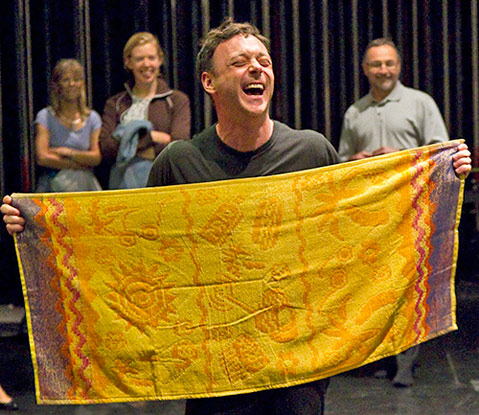
Santa Barbara: A Birthplace for Dance
For David Asbell, executive director of the Lobero Theatre Foundation, this is what DANCEworks is all about: supporting artists to create work that will go on to play a role on the national and even the international arts scene. “DANCEworks elevates the reputation of Santa Barbara as a community that supports new and innovative artwork,” he noted. “This program has truly put Santa Barbara on the national dance map.” Asbell has in mind both funding — the NEA has awarded major grants for three consecutive years of the program — and critical attention: Vanity Fair columnist James Wolcott lavished praise on Keigwin’s 2010 residency. And that’s not all. Two of the four new works created on the Lobero stage at DANCEworks went on to premiere at the Baryshnikov Arts Center, one of New York’s hot spots for contemporary dance. “It’s nice that Baryshnikov knows work that’s being generated here in Santa Barbara is ending up in his building,” Asbell noted, adding, “All of the works created during DANCEworks have gone on to tour nationally and in some cases internationally, and each choreographer has seen significant career growth since their residency. Are we contributing to the canon of dance? Yes, we are.”
Director of the Bates Dance Festival Laura Faure concurs. “DANCEworks serves as one of the rare and truly committed supporters for contemporary choreographers,” she commented. “Dianne has provided consistent, long-term support for the development of new work, which is one of the most needed services to our field.”
Unlimited access to the stage may be DANCEworks’s most unique attribute, but there are other factors that make this residency special. Unlike all of the residencies mentioned above, DANCEworks takes place on the opposite coast from N.Y.C., providing a very real retreat from the hubbub of city life. And then, as locals well know, there’s the je ne sais quoi of our fair hamlet — a combination of natural beauty, cultural sophistication, and deep community that gives Santa Barbara a certain magic. New York–based choreographer Aszure Barton, who spent time here both with SUMMERDANCE and in the first season of DANCEworks, created “Busk” here in 2009: The work went on to be presented at the Baryshnikov Arts Center, to win critical acclaim, and to tour internationally. Reflecting on the role of Santa Barbara and DANCEworks in the creation of that piece, Vapnek remembered that Barton took her cues for “Busk” from the homeless population of Santa Barbara, some of whom she got to know during the time she spent downtown on lunch breaks and after a hard day’s work at the Lobero, before going home to make dinner at the DANCEworks duplex on the Mesa. “Aszure asked me recently, ‘Can we ever come back to Santa Barbara?’” Vapnek said. “She’s in such demand now, and the Banff arts center in Canada gives her this wonderful residency every year where they stay for two months and get fed three meals a day. But when you’re totally removed from the fray in an extraordinary location like that, your work probably goes in a different direction; she wouldn’t have made ‘Busk’ in Banff. Aszure says there’s nothing like a residency in Santa Barbara.”
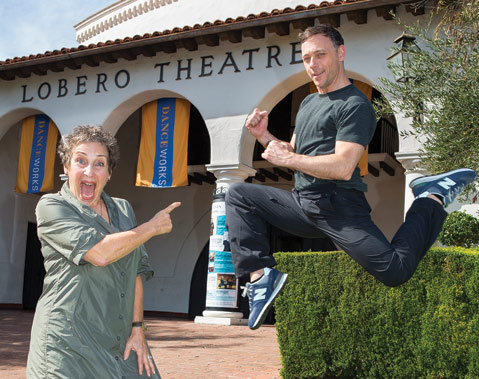
There’s Something About Larry
Given that Vapnek has her pick of artists to choose from — a monthlong residency in Santa Barbara isn’t exactly hard to sell, and she does her research, scouring dance reviews and attending the annual Association of Performing Arts Presenters (APAP) conference in New York to discover new talent — why does she continue to bring Keigwin back? Vapnek’s reasons are many, from the professional to the personal, the objective to the subjective. “I find his work exciting,” she said. “When he’s at his best, I think there’s an element of surprise and the unexpected. I also love his sense of humor, which is very difficult to do in dance without descending into slapstick.”
When I suggested that SUMMERDANCE and DANCEworks have played a significant role in fostering Keigwin’s artistic development, Vapnek demurred. “He had so much innate talent and he’s so likeable that if we didn’t, somebody else probably would have,” she suggested. “Everybody who works with Larry loves him and wants more.”
Watching Keigwin in rehearsal with his dancers, that je ne sais quoi is evident. Larry’s just … likeable. He’s affectionate, physically expressive, and a little campy. He likes to tease his company members; his eyes are typically crinkled with laughter; he seems to approach the task of making dance as if it’s as much a party as a job. At the same time, he’s focused, setting a concrete task for one group while he works with another, holding his dancers accountable for generating and polishing material, and sometimes asking them to adapt a phrase over and over again until he’s satisfied.
Among the Santa Barbara community members and amateur dancers who worked with Keigwin on “Bolero Santa Barbara” in 2010 was Maya Shaw Gale, a therapist and writer. Gale plans to participate again in this year’s community project, and said she’s inspired to do so because of Keigwin’s approach to “Bolero.”
“As an older dancer, I found myself moving beyond my own perceived limits and feeling like I was 25 again, but with much more uninhibited expression,” Gale said. “Larry has an unusual ability to bring a diverse group into a unified focus, and to instill in the participants a beautiful spirit of cooperation, mutual support, and playfulness, all while creating an aesthetically pleasing outcome.”
When Vapnek speaks about Keigwin’s strengths as a director and choreographer, she, too, notes his gift for getting the best from his people and for imbuing his dances both with universal appeal and artistic sophistication. “He’s able to integrate what’s out there in pop culture and reflect on it in an intelligent way,” Vapnek noted. “I like his wit, his sensibility, and his movement vocabulary. He has a unique ability to draw out his dancers’ personal resources and ultimately create work that resonates with audiences.”
There’s no doubt Keigwin is a talented artist who’s also a pleasure to work with. Yet those facts alone wouldn’t be enough for Vapnek, who matches her passion for dance with impressive business acumen and a keen awareness of the place of DANCEworks on the national dance scene. Vapnek said she was impressed with the way Keigwin worked systematically to set up his company and to help it grow. “It takes a lot more than talent to launch your own company — to know when to bring in a board, all of those details,” she said. “He did it all right.”
Thus Keigwin has earned his place as the first artist to be invited to DANCEworks for a second time, and on his company’s 10-year anniversary. “Larry and I had a conversation last summer in which I said to him, ‘Is there something you want to do that you haven’t had a chance to explore?’” Vapnek said. “He was so excited — he’s always been driven by deadlines — like most artists, he tends to get commissioned for a particular project and has to focus on the product rather than the process. I’m offering him the freedom to ‘unpack’ something new.”
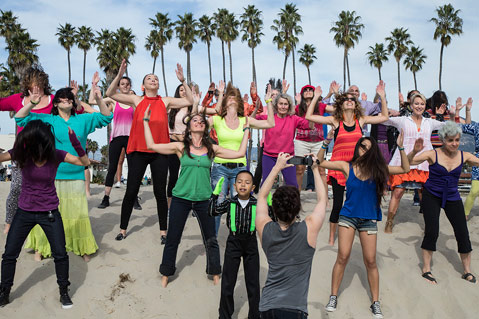
Wisdom In Uncertainty: DANCEworks 2013 and Beyond
When Keigwin spoke to me from the Honolulu Airport, his DANCEworks 2013 program was still to be determined, which is of course the whole point. Six members of his company have spent the month in residence with him, and six more will fly out for the shows on March 1-2, when they’ll perform a range of short works from the repertory. Among the contenders are “12 Chairs,” which premiered at the Joyce Theater last year, and two works originally set on students at the Juilliard School: “Runaway,” which sends up the fashion world, and “Megalopolis,” featuring a heady blend of the music of M.I.A. and Steve Reich. (“It bounces between formalism and pop culture,” Keigwin explained, sounding as if he might be describing his entire oeuvre. “It’s a really energetic work.”) The rest of the program will consist of whatever new material Keigwin dreams up while in residency on the Lobero stage, plus a screening of the original music video he creates in collaboration with community members.
Audiences will be able to judge for themselves whether Vapnek is justified in bringing Keigwin back to Santa Barbara. Ask the choreographer what keeps him returning, and he’ll tell you that what Vapnek offers is just what he — and all choreographers — need.
“DANCEworks is a place where the seeds of dance are planted, and they can grow nationally or internationally,” he said. “It would be amazing if more people could offer what Dianne offers, especially in New York, where there’s such a shortage of theater time and technical rehearsal that there’s little room for experimentation — which is how contemporary dance thrives.”
Another critical factor for the flourishing of dance is a savvy audience, which is exactly what DANCEworks is helping to develop right here in Santa Barbara. The way Vapnek sees it, every talented artist who spends a month in Santa Barbara, works with community members, performs for the public, and leaves with new work generated on the Lobero stage enriches both our creative community and the national one. That’s why David Asbell predicts DANCEworks will be around for a while. “The Lobero’s commitment to this partnership is ongoing for the foreseeable future,” he said. “We have a very high level of confidence in Dianne’s ability to continue to curate the program with taste, foresight, and passion.”
Vapnek says she reserves the right to one day choose an artist from closer to home or from further afield, but so far, she finds herself drawn time and again to choreographers based in the capital of American dance: New York City. “It’s an intensity, a richness, and a diversity of approaches that excites me,” she explained, adding, “I’m always interested in the work of artists who are looking forward. Of course, everyone builds on everyone’s shoulders — of course you look back — but I think the best artists look forward and take the work to a new place. My plan is to keep offering this residency to people whose work I believe in.”
What Vapnek is offering to the artists she believes in is permission to be uncertain — as she puts it, to “unpack” something new — and to begin a process without knowing what will emerge. That gift is a rare one, at least in America, yet it’s a critical component of art making. In a culture that’s increasingly obsessed with efficient production and conservative investments, DANCEworks Santa Barbara offers something different: a welcoming community in a beautiful setting, ample time in an inspiring space, and maybe most of all, a reminder that it’s okay not to know what will come of the creative process — that in fact, as Keigwin knows, it’s the not-knowing that makes it fruitful.
4•1•1
Tomorrow, February 22, join Larry Keigwin and dancers for Boogie Night, a DANCEworks fundraiser party at Oreana Winery. Tickets are available at the door or in advance at lobero.com. Keigwin + Company will perform at the Lobero Theatre on Friday, March 1, and Saturday, March 2, at 8 p.m. For tickets, call 963-0761 or visit lobero.com. To learn more about DANCEworks, visit sbdanceworks.com, and for more on Keigwin + Company, check out larrykeigwin.com.

